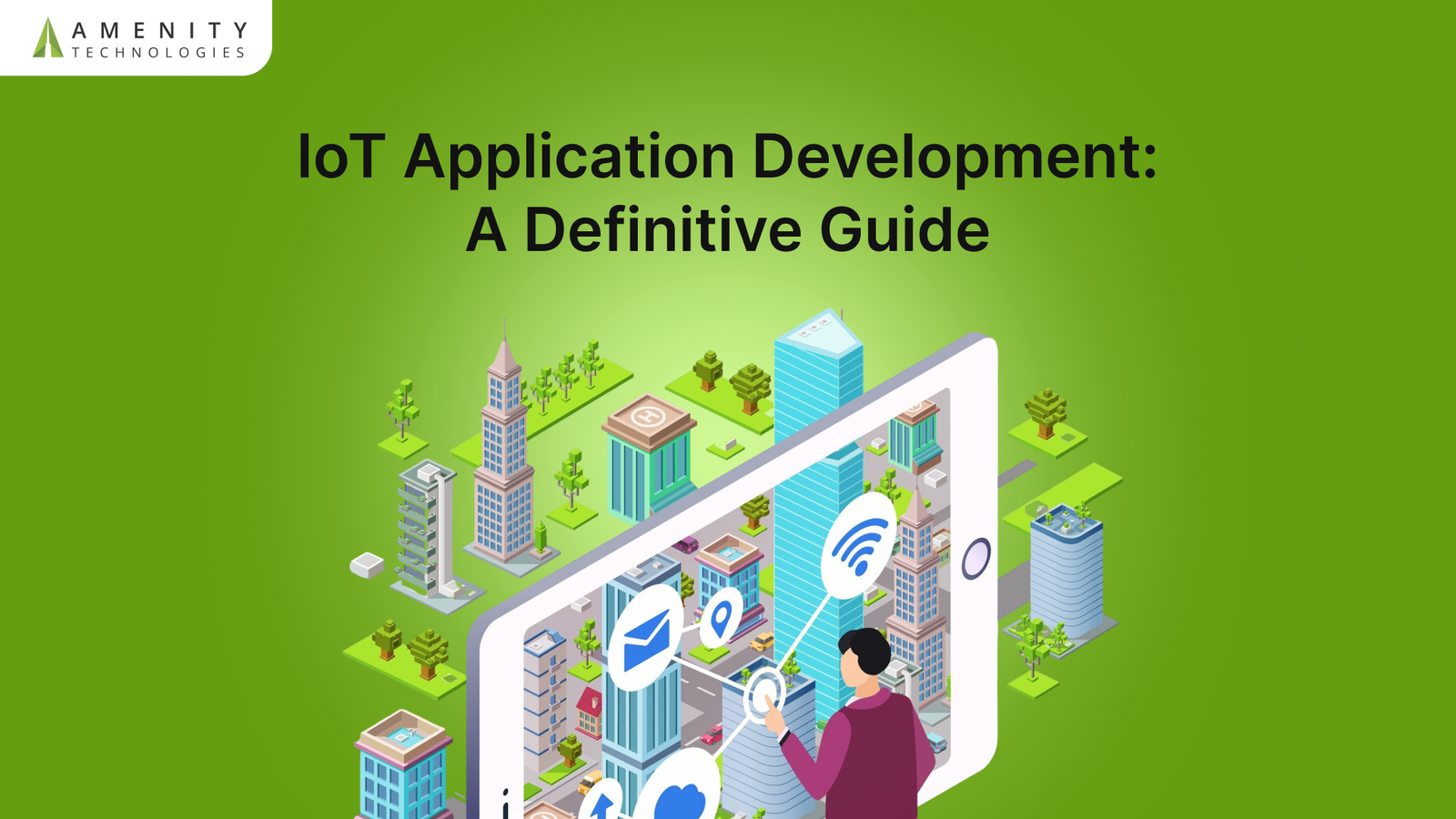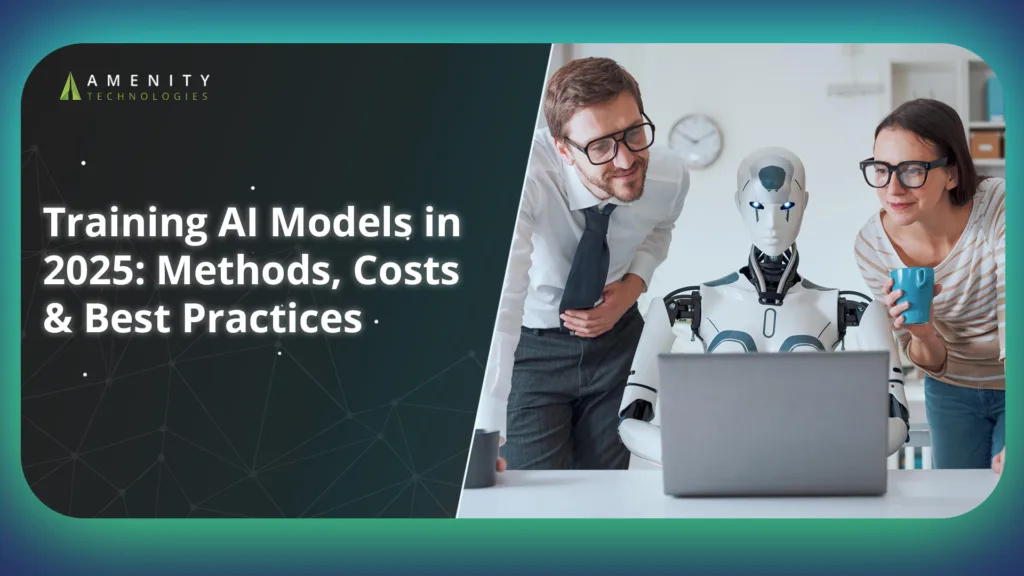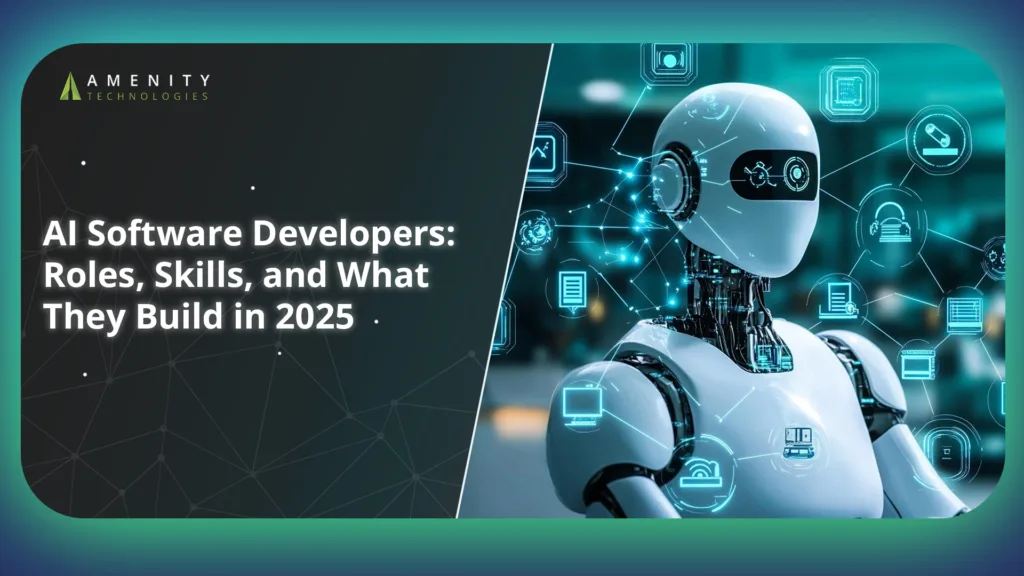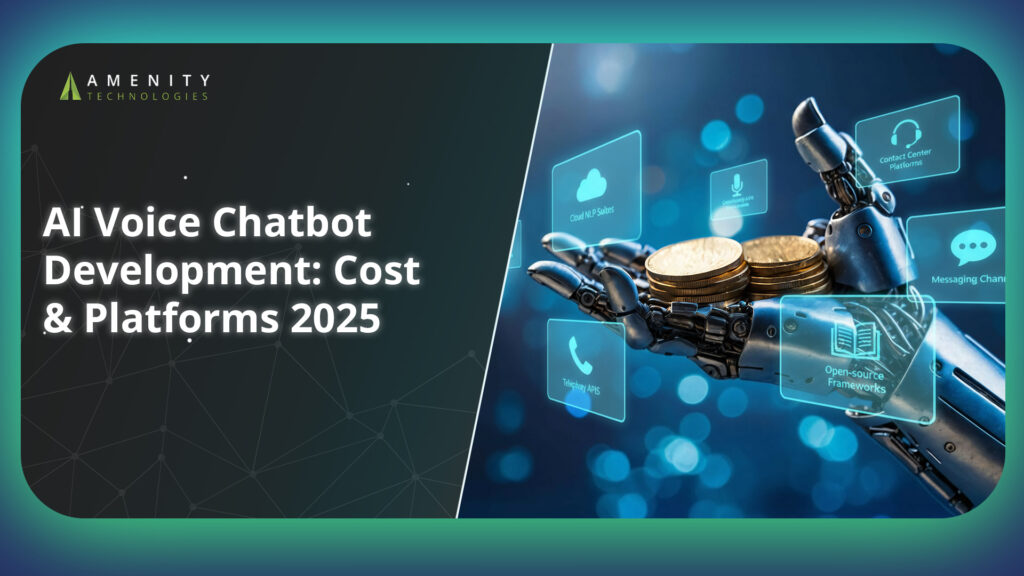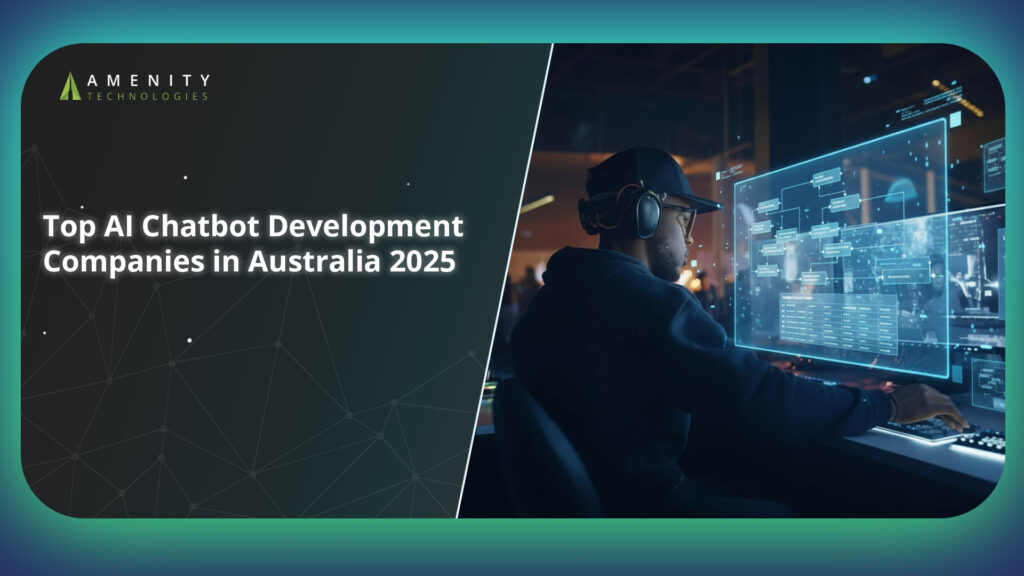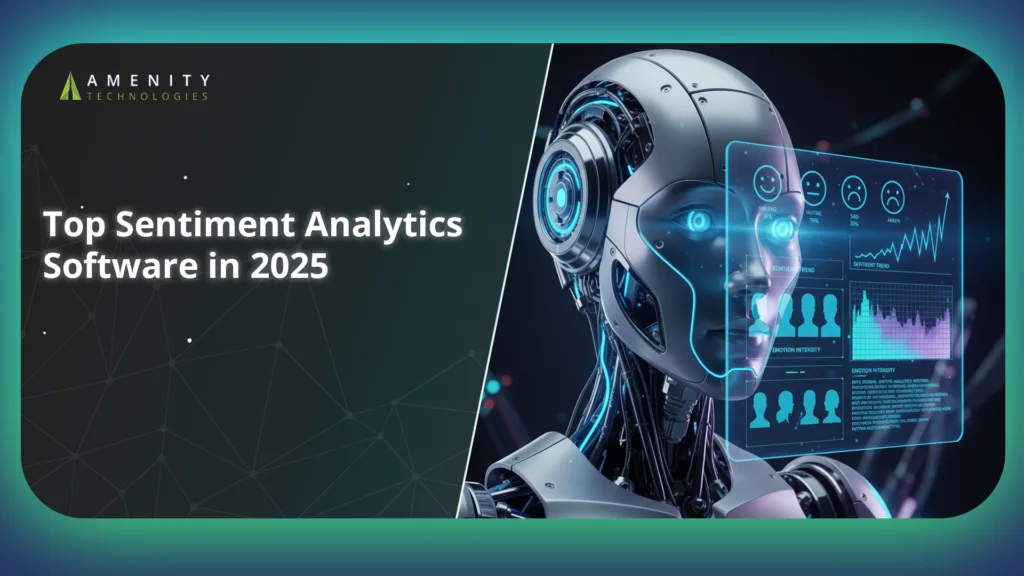IoT application development powers over 18.8 billion connected devices (as per 2024) worldwide, with the market expecting the adoption of IoT devices to reach 40 billion by 2030. How can businesses tap into this growth while ensuring security and scalability? Enterprises are adopting enterprise IoT solutions that use edge computing and real-time IoT analytics to cut operational costs by up to 25%.
From sensor integration to predictive maintenance, these technologies boost efficiency across healthcare, manufacturing, and logistics. Choosing the right IOT application development services makes the difference between a basic system and one that drives measurable ROI. This guide covers key IoT architecture and development strategies to help you build future-proof applications.
Understanding IoT Architecture & Key Trends
Effective IoT application development starts with a clear understanding of system architecture and the trends shaping how solutions are built in 2025. As the number of connected devices grows, the structure and behavior of these networks become more critical.
Enterprises need enterprise IoT solutions that can handle massive data flows, integrate with legacy systems, and support advanced features like digital twins and edge computing. Knowing how these systems are built—and where the industry is headed—will help you make more informed technical and business decisions.
Layers of IoT Architecture
A well-structured IoT architecture enables reliable communication between devices, cloud systems, and users. It typically includes four layers:
- Perception Layer: This is the physical layer where data originates. Devices like temperature sensors, RFID tags, and motion detectors collect real-world inputs. Accurate sensor integration is essential here to ensure reliable outputs, especially in industrial IoT and smart healthcare applications.
- Network Layer: This layer transmits data through wireless protocols like LoRaWAN, Zigbee, and BLE. Low-power wide-area networks (LPWANs) support long-range communication with minimal energy use, which is critical in fleet tracking and infrastructure monitoring.
- Edge/Cloud Processing Layer: Processing begins close to the source through edge computing devices, reducing latency and network load. At the same time, cloud systems store and analyze data at scale. Hybrid processing enables real-time responses and deep historical insights.
- Application Layer: The final layer provides interfaces such as dashboards, mobile apps, and APIs. It converts raw data into actionable insights for users, whether monitoring an ICU bed or managing predictive maintenance on a factory floor.
Understanding these layers helps teams build secure, scalable systems and deploy IoT in sectors with high ROI.
Emerging Trends in IoT Development
The shift from device-focused builds to intelligent, secure ecosystems defines 2025’s IoT application development priorities.
- Edge Computing: Processing at the edge cuts latency and reduces dependence on cloud connectivity. In healthcare, edge AI devices enable instant decision-making in remote patient monitoring.
- 5G IoT: 5G connectivity improves data throughput and reduces lag, supporting real-time communication in dense sensor environments like smart factories and public infrastructure.
- AIoT (AI + IoT): Pairing IoT with AI enables smarter predictions and automation. For example, predictive maintenance powered by AI can reduce equipment downtime by 40% in manufacturing environments.
- Digital Twins: Virtual models of real assets allow continuous monitoring and simulation. Used heavily in industrial IoT, digital twins improve operational efficiency and help avoid costly failures.
- Chip-level Innovation: Smaller, energy-efficient chips enhance battery life and enable richer features in compact devices. This is especially relevant in wearables and remote field equipment.
- Microservices Architecture: Many teams now prefer modular services for development. Microservices IoT designs isolate functions like data ingestion, analytics, and authentication. This improves system security and makes updates easier.
- Security-focused Deployments: With rising threats, companies are shifting to zero-trust frameworks, encrypted APIs, and frequent OTA security updates as a base standard for deployment.
Trends show that enterprises are no longer experimenting, they’re scaling. And those using the right IoT application development services with strong technical stacks are gaining a measurable competitive edge.
How to Choose Right Tech Stack & Protocols?
The success of any IoT application development project depends heavily on the technology stack. Selecting the wrong hardware, communication protocol, or cloud tool can lead to latency issues, integration failures, or even security breaches.
With so many device types and use cases, there’s no universal standard, but there are best-fit choices depending on the project scope. Whether you’re building for smart healthcare, industrial IoT, or fleet tracking, using the right mix of sensors, protocols, and cloud services ensures your solution stays responsive, secure, and scalable.
1. Device-level Tech (Sensors & Microcontrollers)
Device-level components form the base of the IoT architecture. Sensors collect environmental data, while microcontrollers process and transmit that data.
Current sensors are more compact, power-efficient, and accurate than previous generations. Multi-sensor modules now measure temperature, humidity, motion, and air quality simultaneously. Integration of these into IoT application development services reduces hardware complexity and improves system reliability.
Microcontrollers like the ARM Cortex-M series support protocols such as LoRaWAN, Zigbee, and BLE. BLE works best for wearables and indoor smart devices, while LoRaWAN suits outdoor, long-range use cases in agriculture or utilities. Zigbee offers a balance of speed and low power for home automation and smart cities.
2. Connectivity Protocols
Data transmission protocols determine how devices communicate with each other and backend systems. Your selection must align with network constraints, data volume, and power availability.
- MQTT: Lightweight and ideal for intermittent or low-bandwidth networks. Widely used in industrial IoT and smart homes.
- HTTP/HTTPS: Suitable for REST APIs and cloud-native applications. Works well in stable, high-bandwidth environments.
- CoAP: Designed for constrained devices, CoAP uses UDP and offers low overhead. It’s efficient for sensor-heavy deployments like environmental monitoring.
Each of these protocols supports encryption, but MQTT and CoAP are preferred in edge computing setups where lightweight communication is essential. Projects involving remote sensors or low-power networks often choose CoAP or MQTT for their efficiency and ease of deployment.
3. Platforms & Cloud Tools
IoT platforms centralize device management, data processing, and application logic. The choice between AWS IoT, Azure IoT Hub, and Google Cloud IoT depends on enterprise requirements, existing cloud infrastructure, and integration needs.
- AWS IoT Core offers broad protocol support, device shadows, and real-time rules-based processing. It works well for multi-region deployments and supports tight integration with other AWS services.
- Azure IoT Hub provides enterprise-grade device management, strong security baselines, and plug-and-play device templates. It also supports microservices IoT architectures using Azure Functions.
- Google Cloud IoT Core is favored for AI workloads and analytics, thanks to native integration with BigQuery and TensorFlow.
For edge computing, tools like AWS Greengrass and Azure IoT Edge allow logic to run locally on gateways or microcontrollers, reducing latency and enabling offline functionality.
Selecting the right platform affects scalability, cost, and feature availability. Teams offering IoT application development services must align their tech stack with performance requirements and integration goals.
How to Build Secure and Scalable IoT Systems?
Every IoT application development effort must balance scale with security. As deployments move from prototypes to thousands of connected devices, vulnerabilities increase. Data breaches, downtime, and latency issues often result from poor system design or unsecured endpoints. To avoid this, enterprises adopt structured models using edge computing, encrypted APIs, and microservices IoT frameworks. These methods help reduce risk, improve responsiveness, and ensure systems can grow without breaking. Let’s break down the design decisions that support scalable, secure enterprise IoT solutions.
Edge-first vs Cloud-first Models
Where data gets processed matters. Edge computing handles information locally, on or near the device, before sending it to the cloud. This reduces latency, cuts bandwidth costs, and allows the system to work during connectivity disruptions.
In contrast, cloud-first setups rely on centralized infrastructure. This is easier to manage initially but becomes inefficient as device count increases. Use cases like predictive maintenance or smart healthcare monitoring benefit more from edge-first models, especially when decisions must be made in milliseconds.
Hybrid systems often work best. Time-sensitive tasks process at the edge, while historical data flows to the cloud for storage and IoT analytics. The right balance depends on the application, but in 2025, edge-first designs are preferred in most real-time environments.
Security Best Practices
Security should be embedded into every part of IoT application development—from hardware selection to API design.
Key practices include:
- End-to-end encryption using TLS or DTLS for all device communication.
- Secure APIs with OAuth2 and token-based authentication.
- Frequent OTA updates to patch vulnerabilities without manual intervention.
- Zero-trust architecture where no device or user is implicitly trusted.
- Secure boot and firmware validation to prevent tampering.
Security also includes physical protections. Devices in public or harsh environments must be tamper-resistant and shielded from unauthorized access.
Device identity management is another priority. Each sensor or edge node should have a unique identity that can be revoked if compromised.
Poor security ruins credibility and causes compliance issues, especially in regulated industries like healthcare and energy. Strong practices reduce attack surfaces and make long-term system maintenance more manageable.
Microservices Architecture for IoT
Modular design using microservices IoT patterns improves both scalability and security. Each microservice performs a single function—data ingestion, authentication, alerting—allowing isolated updates and faster recovery in case of failure.
Security modules can run as independent services. For example:
- A dedicated service for device authentication.
- A service monitoring for anomalies or unauthorized traffic.
- A separate logging and audit layer for compliance.
This separation prevents full system compromise if one part fails. It also supports scaling specific features independently—ideal for high-volume systems like fleet tracking or industrial IoT setups.
Adopting microservices also allows better CI/CD integration, making OTA security updates and testing faster and more reliable. It’s an essential approach for teams delivering modern iot application development services that need to scale securely.
Real-world Use Cases Driving ROI
Strong use cases are what separate experimental deployments from results-driven IoT application development. When connected systems work properly, they reduce costs, prevent downtime, and improve service delivery.
Whether it’s automating factory equipment, monitoring ICU beds, or optimizing delivery routes, enterprise IoT solutions deliver measurable value. Below are four categories where IoT is already producing high returns on investment, using a combination of edge computing, predictive maintenance, and real-time analytics.
1. Smart Healthcare & Remote Monitoring
Healthcare systems use IoT application development services to improve patient outcomes and reduce staff workload. Like, IoT wearables can track heart rate, oxygen levels, and movement, helping detect early warning signs.
Sensor-equipped hospital beds that monitor pressure and movement to prevent bedsores and detect patient distress. Remote patient monitoring (RPM) platforms that allow doctors to track vitals outside the hospital.
2. Industrial IoT & Predictive Maintenance
Factories and plants apply industrial IoT to prevent equipment failure and reduce unplanned downtime. The sensors can track vibration, heat, and machine cycle rates. Meanwhile, digital twins can simulate and optimize machine performance and IoT analytics to detect patterns that indicate mechanical stress or inefficiency.
A McKinsey report found predictive maintenance reduces breakdowns by up to 50% and lowers maintenance costs by 10–40%. By processing data through edge computing, teams get faster insights without waiting for cloud processing.
3. Logistics & Fleet Management
Transport and delivery companies rely on IoT application development to manage fleets, monitor cargo, and improve routing. The GPS-based fleet tracking for real-time vehicle locations, and sensor integration can monitor cargo temperature, vibration, and humidity. With route optimization, the drivers can use real-time data to avoid traffic or road hazards.
These systems reduce fuel consumption, improve on-time delivery, and extend vehicle lifespans. A study by Verizon Connect showed companies using IoT-based fleet systems witnessed the fuel savings in cost to double from 8% to 16%, and accident cost savings increased from 11% to 22%.
4. Smart Cities & Infrastructure
Local governments use enterprise IoT solutions to optimize utilities, manage public spaces, and improve urban planning. The air quality sensors can be installed on streetlights or buses, and the public transport tracking can update routes and arrival times in real time. Smart meters can adjust lighting or water flow based on usage patterns.
Development Process: From Idea to Launch
Building a reliable IoT application isn’t just about connecting devices. A structured process ensures the solution performs under real-world conditions, meets compliance standards, and delivers long-term value. Each step, from goal setting to testing, plays a role in shaping scalable, secure systems.
The right IoT application development services will guide teams through each phase while aligning with business outcomes and technical constraints. Below is a step-by-step breakdown of how most enterprise-grade IoT application development projects move from idea to deployment.
Step 1. Define business goals & feasibility study
Start with a clear business problem. Whether it’s reducing downtime in manufacturing or enabling remote health monitoring, define what success looks like. Then assess whether available sensors, IoT infrastructure, and connectivity options can support the concept. This early study ensures your idea is technically and financially viable. It also clarifies hardware, compliance, and IoT security requirements before any code is written.
Step 2. Build PoC/prototype on edge or cloud stack
A proof of concept helps validate both hardware and software early. Choose between edge computing or cloud-first setups based on latency and connectivity needs. Rapid prototyping platforms like Raspberry Pi or Jetson Nano can simulate real conditions. Testing basic functions—like sensor data collection and transmission—helps uncover issues early. This stage ensures teams only scale systems that have proven their performance under real usage.
Step 3. Design UI (mobile/web dashboards) and APIs
Once the core data flow is tested, design interfaces. Dashboards show sensor metrics, alerts, and system status. Mobile apps are often needed in fleet tracking, while web UIs suit factory monitoring. Focus on simplicity and real-time updates. At the same time, design secure, scalable APIs to manage devices and data flow. Secure integration is a top priority, especially in smart healthcare and enterprise IoT solutions involving personal or proprietary information.
Step 4. Implement agile sprints with hardware/software sync
Development should happen in sprints. Align firmware updates with frontend/backend iterations to avoid version mismatches. Use backlog tracking, CI pipelines, and QA processes tailored to both hardware and software timelines. Clear communication between hardware and software teams reduces integration risks. Agile methods allow for fast feedback, early fixes, and better system reliability.
Step 5. Test connectivity, latency, battery, security
Testing covers real-world connectivity conditions (e.g., weak cellular zones), battery performance, and latency tolerance. Security tests include penetration testing, credential validation, and OTA update behavior. Stress tests simulate scale to see how systems perform under load. These validations are critical for industrial IoT, where outages or data loss can cost millions.
Step 6. Launch with CI/CD & monitoring pipelines
Deploy the system using CI/CD pipelines for firmware, backend, and mobile apps. Set up real-time monitoring to track uptime, latency, and error rates. Include anomaly detection and automated alerts to handle early-stage failures.
Step 7. Iterate based on metadata insights and analytics
Post-launch, use IoT analytics to track device health, user behavior, and performance metrics. Feed this data into the next development cycle to refine features and expand system capabilities.
How Amenity Technologies Can Help with IoT Application Development?
Partnering with the right team is essential for successful IoT application development. Amenity Technologies brings deep technical expertise, fast execution, and industry-specific experience to build scalable, secure systems. Whether you’re deploying enterprise IoT solutions in healthcare, logistics, or manufacturing, Amenity delivers from device to cloud—with performance and security built in at every layer.
Here’s what sets Amenity Technologies apart:
- Custom sensor-to-cloud architectures:
We design and implement full-stack systems using protocols like MQTT, CoAP, and 5G IoT. Every project is mapped to real business needs, whether it’s real-time fleet tracking or smart energy systems.
- Edge AI integration:
Our engineers deploy AI models on devices like Raspberry Pi and Jetson Nano. These edge-first systems handle local processing, enabling real-time decision-making without relying on constant cloud connectivity, ideal for predictive maintenance and remote monitoring.
- Secure microservices frameworks:
We build modular systems using microservices IoT design, separating authentication, data ingestion, and monitoring. This enables safer OTA updates, better fault isolation, and compliance with strict IoT security standards.
- Unified dashboards and mobile UI:
Amenity delivers responsive dashboards and mobile apps that connect directly to backend systems. We focus on fast load times, clean design, and secure data visualization for roles across your organization.
- Domain-specific PoCs:
Need to prove value before scaling? We’ve built targeted proof-of-concepts for smart hospital beds, factory digital twins, and cold-chain fleet tracking. Each PoC is deployable, measurable, and aligned with business metrics.
- Continuous support and scaling:
We don’t disappear after launch. Our team offers long-term support, monitoring setup, and scaling plans, so your system stays reliable as your device fleet grows.
Working with Amenity Technologies means faster time to deployment, fewer integration issues, and better alignment with business outcomes. Our approach to IoT application development services blends technical depth with proven delivery, resulting in systems that work in the field, not just in theory.
Conclusion
Strong IoT application development depends on clear architecture, secure design, and use-case alignment. Businesses investing in enterprise IoT solutions see measurable results, like faster decision-making, lower operating costs, and real-time visibility.
From edge computing to IoT analytics, 2025 demands systems that are reliable and scalable. The right IoT application development services reduce risk and speed up time-to-market. Amenity Technologies delivers these outcomes through structured processes, deep technical execution, and domain-specific expertise, building IoT systems that deliver real business impact.
FAQs
Q1: What factors determine IoT app development costs?
Costs depend on sensor types, connectivity (e.g., 5G, BLE), UI complexity, cloud hosting, IoT security, and ongoing maintenance.
Q2: How long does an enterprise IoT project take?
Most projects take 4–6 months from prototype to launch, based on device volume and integration needs.
Q3: Can IoT apps work offline?
Yes. With edge computing, devices can process data locally and sync once online.
Q4: How do you ensure IoT security?
Use encrypted communication, secure APIs, microservices IoT design, OTA updates, and zero-trust frameworks.
Q5: Which industries see highest ROI from IoT apps?
Healthcare, manufacturing (via predictive maintenance), logistics (fleet tracking), and utilities show the strongest returns.
Q6: How to choose the right iot application development services provider?
Look for edge/cloud integration experience, proven use cases, full-stack development, and long-term support.


